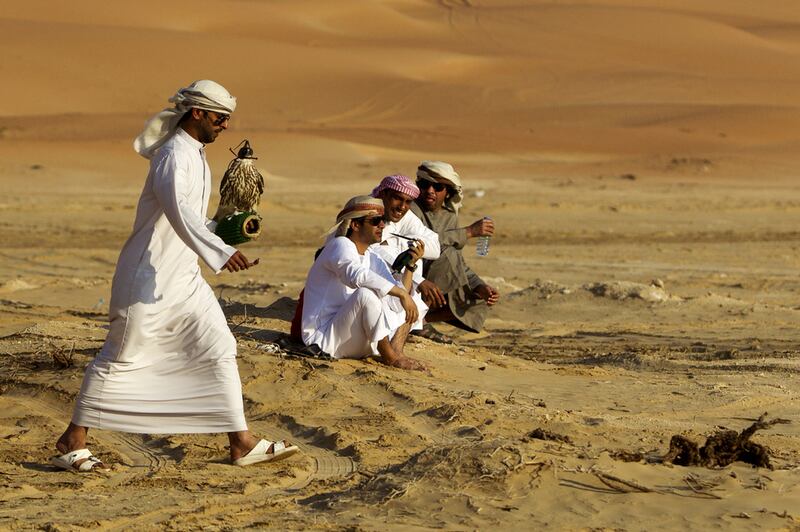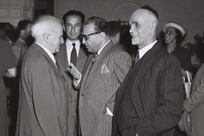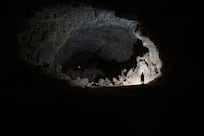Falconry’s inclusion on Unesco’s list of Intangible Cultural Heritage of Humanity has been extended to include an additional six countries.
The UAE led the efforts of 24 countries around the world to expand the inscription, which now includes Croatia, Ireland, Poland, the Netherlands, Slovakia and Kyrgyzstan.
The decision was made during the 16th periodic meeting of the Intergovernmental Committee for the Safeguarding of the Intangible Cultural Heritage of Humanity, which is being held virtually from December 13 to 18. This follows news that Arabic calligraphy had been added to the list.

"The successful fourth inscription of falconry, and the growing interest among countries from all regions of the world in elaborating a multinational file reflects the importance of falconry as an integral part of our shared living heritage,” says Noura Al Kaabi, the UAE Minister of Culture and Youth.
Falconry has been practiced in the Arab region for 4,000 years, traditionally by desert-dwelling Bedouins as an important form of hunting and fishing in a land with scarce natural resources.
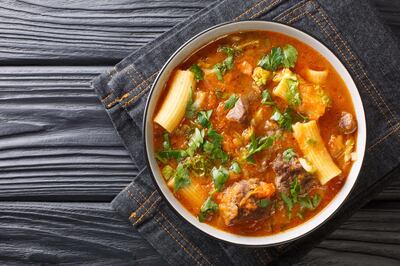
"Our ongoing work to document and disseminate key aspects of tangible and intangible cultural heritage is in service of our key strategic objective of preserving and promoting the UAE’s cultural traditions,” says Mohamed Khalifa Al Mubarak, chairman of DCT Abu Dhabi.
“The importance of these elements in moulding Emirati cultural identity cannot be overstated – they tether us to our past, connect us to the memories of our ancestors, and allow us to practice our living heritage and enhance our sense of unity and belonging. We are pleased to work alongside the Ministry of Culture and Youth in this endeavour, inspired by the vision of our Founding Father, the late Sheikh Zayed, and we will continue our efforts to safeguard our rich history and culture for generations to come."
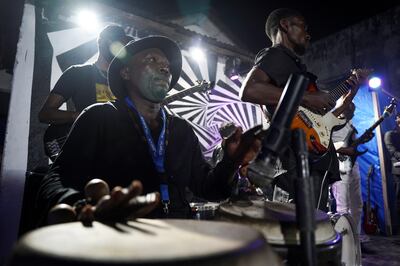
Abu Dhabi and the UAE have now registered a total of 12 elements on the Uensco List, including falconry, Arabic calligraphy, Al Sadu, Al Taghrooda, Al Ayyala, Al Majlis, Gahwa, Al Razfa, Al Azzi, the palm tree, Al-Aflaj and camel racing, as well as the city of Al Ain, which was added to the list of Unesco World Heritage Sites in 2011.
Another new addition to the Intangible Cultural Heritage of Humanity list is Montenegro's Boka Navy, one of the world's oldest maritime organisations. Boka Navy was founded in 809 AD in the coastal town of Kotor, and for about 1,000 years served as a brotherhood of seafarers. "For the past two centuries, it has played a memorial role, preserving and promoting maritime history and tradition," Unesco said.
A Haitian soup widely seen as a symbol of the nation's independence has also been recognised. Squash-based Joumou soup is “so much more than just a dish", said Audrey Azoulay, the director-general of Unesco. “It tells the story of the heroes and heroines of Haitian independence, their struggle for human rights and their hard-won freedom.”
And further reiterating the breadth of the list, the Congolese rumba has been added this year, because it "allows the transmission of social and cultural values of the region, but also the promotion of social, intergenerational and united cohesion", said Unesco.
